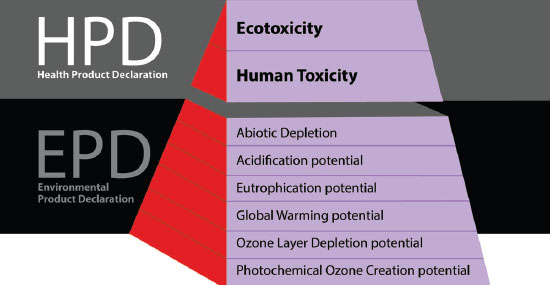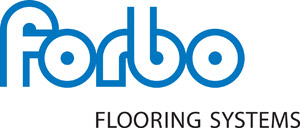Health and Transparency in Product Declarations
The Healthy Building Network
The HPDC is led by an organization that was founded in 2000 known as the Healthy Building Network (HBN). This group of leaders from the national environmental health movement recognized the many opportunities for change in the building materials market. For example, until 2004, pressure-treated wood was the most common source of arsenic exposure to children and adults in the United States. Due to loopholes in waste disposal laws, arsenic leaching from the wood in landfills was (and remains) was implicated in groundwater contamination. Another common building material, polyvinyl chloride plastic, also known as PVC or vinyl, is estimated to be the single largest material source of dioxin to the global environment over the course of its life cycle, production, use and disposal. The HBN contends that substituting cost-effective, healthier building materials for these products is the single most effective step we can take to preserve and regenerate our environment, and to protect public health.
The Healthy Building Network is also very committed to the goal of achieving environmental justice. They cite studies in the United States that have repeatedly demonstrated that poor communities and communities of color suffer disproportionate environmental and health impacts associated with heavy industry and waste facilities. Internationally, the globalized economy has been shown to often inflict environmental and human health consequences upon indigenous peoples living far from the site of industrial activity. For example, Inuit women living subsistence lifestyles in far northern Canada have higher concentrations of industrial chemicals in their breast milk than any other community of women on Earth. For these holistic reasons, the Healthy Building Network employs comprehensive lifecycle thinking when evaluating green building materials, mindful of David Orr’s observation that "Nothing is beautiful that causes ugliness in any other place or at any other time in the world."
Since their founding HBN projects have directly resulted in the introduction of new, healthier building materials into commercial markets, shifting over $4 billion in materials purchases from toxic materials to healthier alternatives that are comparable in both price and performance to the materials they have replaced. They played a key role in establishing precedent-setting Green Building Guidelines for Health Care Facilities that became the basis for LEED for Healthcare.

The emerging use of Health Product Declarations (HPDs) is intended to identify full transparency particularly in the toxicity of products and materials used in buildings by expanding upon the information provided in an Environmental Product Declaration (EPD).
Image courtesy of Forbo Flooring Systems
They have also been involved in demonstrating well-built, healthy and green modular homes to the affordable housing market in the Gulf States region.
With all of the above background and support, the HBN has developed the first, on-line evaluation tool for building materials known as The Pharos Project. At its core, this is a tool for users to locate the best materials to meet their current needs for transparency in building materials and products. It is a tool to help cut through “green-washing” and identify the realities about what makes a product truly green. It is also a platform from which to show manufacturers what constitutes a market in support of the best environmental, health and social equity practices. It is a fee based program but open to all and includes
- Building product library: Transparent and in-depth information about what's really in building products, with comparative scores on environmental and health impacts
- Chemical and material library: Over 20,000 chemicals and bio-based materials with health and environmental hazards have been screened from over 40 authoritative lists
- Certifications and Scoring: Transparent scoring protocols for environmental and health impacts of building products are linked to a library of over 150 certifications
As a result of the combined, collaborative work of the HBN and the HPDC, the tools and information needed for making truly informed decisions about building products and materials is now more available than ever before. This is good news for all of us interested in creating buildings that are truly healthy, green, and sustainable in all aspects.
Conclusion
When specifying building materials, it is now entirely possible to ask for full transparency and demand the submittal of both Environmental Product Declarations and the Health Product Declarations. If that request isn’t met, then it is reasonable to ask why. Since owners or lessors of buildings can make product transparency and toxicity a criterion in purchasing or leasing decisions it may be incumbent on specifiers to follow through on these requests.
Ultimately, ask the tough questions on every design project before making a decision on a material and be willing to consider all the ways it could contribute to a healthy environment. Some of those questions can now include:
• Is it sourced from sustainable materials?
• Is it designed to minimize construction waste?
• Does it emit compounds that might impact human health?
• Are excessive amounts of energy or scarce raw materials used in its creation?
• Can it be safely removed and naturally recycled at the end of its working life?
• Will its performance attributes contribute to a more energy efficient, healthy living space?
• Is it a truly sustainable product, or a product with sustainable attributes?
The information in the EPDs and HPDs will answer these questions and allow a final determination on which products to accept as suitable for building projects of all types.
 |
Forbo Flooring Systems has been creating better environments with its beautiful, durable flooring products for over 100 years. Forbo is committed to complete transparency in its products and the industry, and recently released a full and transparent Health Product Declaration (HPD) going beyond the industry standard EPD to include a product's impact on human health and ecotoxicity. www.forboflooringna.com |








